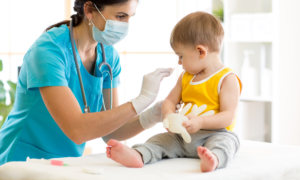Author(s): Save the Children
Published: March 2, 2021
Report Intro/Brief:
“As we approach the one-year mark of nationwide school closures and stay-at-home orders, Save the Children examined how the unprecedented events of 2020 impacted families with children across America. We present a child-focused analysis of U.S. households and a first-ever ranking of states showing where kids are faring best and worst during the pandemic. The COVID Child Protection Ranking examines three hardships that are making it more difficult for children to reach their full potential: hunger, lack of tools for remote learning and trouble making ends meet.
Evaluating four months of data on these three factors in all 50 states, Save the Children found families are suffering in every state and at every income level. But the poorest families are struggling the most. The best states for children during the pandemic are Minnesota, Utah, Washington and New Hampshire. The worst states for children are Louisiana, Mississippi, Texas and New Mexico.
Where a state lands on this COVID ranking is strongly linked to its placement on last year’s End of Childhood State Ranking. Seven states are in the bottom 10 on both rankings. This shows that many of our worst fears for vulnerable children have become realities during the pandemic. Huge disparities along geographic, income and racial/ethnic lines – “childhood equity gaps” – are depriving children of the futures they deserve.
Children who are poor, children who live in rural areas and children from communities of color appear to be faring worst through the pandemic. They are more likely to be food insecure, are disproportionately affected by the digital divide and are likely to experience the greatest learning loss. Their families are more likely to become sick with and die from COVID, to be affected by job and income losses, to be struggling with housing costs, and/or to have fewer child care options. As a result, childhood equity gaps are likely to grow.”
>>> CLICK HERE to see all of Youth Today’s REPORT LIBRARY





























